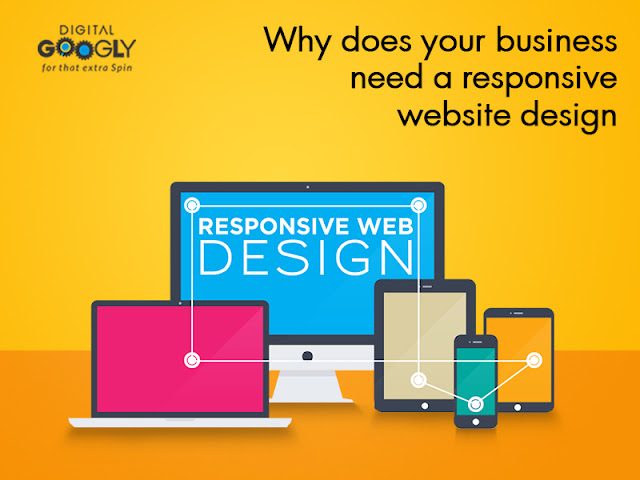Smart web design prioritises the user experience while also projecting a strong brand image. To create the appropriate perception, your website is the initial point of contact between you and the consumer. Web design and development has progressed to a new level in recent years, with video, voice assistants, chatbots, innovative micro-interactions, and cutting-edge AR/VR. However, the most critical and fundamental component that your company should prioritise is a mobile-first strategy. Because mobile searches account for 60% of all searches, Google suggests that all websites be built with this technique in mind. If you haven't previously invested in a responsive web design for your product or service, here are a few compelling reasons to do so immediately.
From
desktop to mobile, tablets, wearables and other devices, responsive web design
means that your website adapts to the device it's being seen on, scaling pages,
text, and pictures as needed. This prevents the pages from being rendered
larger than the device's height and breadth.
More visitors are attracted by a mobile-friendly design
Smartphones
are used by one out of every three persons on the planet. This demonstrates how
popular mobile web browsing is. The need to zoom in, scroll right and left
excessively is eliminated with a responsive site design. Different tabs and
call to action taps will be given ample space and visibility. Not only will
this improve mobile website search results, but it will also bring more
fluidity and a better user experience.
Low-cost and easy-to-maintain
Companies
don't have to invest time and money in a mobile version in addition to a
desktop version if they use responsive web design. Whether you need to create,
scale, or update, everything can be done in one place, making it more
cost-effective and time-efficient. It's also less expensive to maintain
websites built with responsive UI, says an executive of a leading website designing company in Kolkata, India.
It improves your SEO ranks
Even
as Google continues to emphasise mobile-first indexing, your SEO rankings are
dependent on how user-friendly and speedy your mobile website is. When a user
quits your mobile site right after entering, it raises the bounce rate and has
a negative impact on the site. Furthermore, if customers do not appreciate
their browsing experience, there will be fewer traffic and maybe negative
reviews, which can negatively impact SEO. The amount of time spent on a page is
a significant consideration for Google in determining how far the search
results are pushed. Another essential factor in search engine optimization is
the page load time.
Exceptional user experience
Flexibility
and user-friendliness are crucial aspects that make your users like your
website, regardless of the target demographic or niche of your material.
Responsive fluid grids with no unnecessary elements, high-resolution adaptive
images, more use of breakpoints, media queries, SVGs, minimal design, simple
and readable fonts, and so on will make responsive UI work in your favour for a
better user experience, which will boost your brand image and get you more
positive reviews.
More conversions and leads
Your
website will attract a larger audience, even beyond your target market, if it
is responsive and professional. Shoppers, content consumers, and casual web
surfers alike would have a positive user experience, increasing their
likelihood of returning to your website.
Better analytics lead to better outcomes
With
a single design that works across different platforms, it's easy to keep track
of your site's growth. Your data science and analytics teams can produce
superior results because all reports and data originate from a single source.
Understanding how page views differ between mobile, desktop, and tablet
visitors may help you figure out how to optimise your landing page and arrange
critical call-to-actions in a way that maximises viewability and conversions.








0 Comments